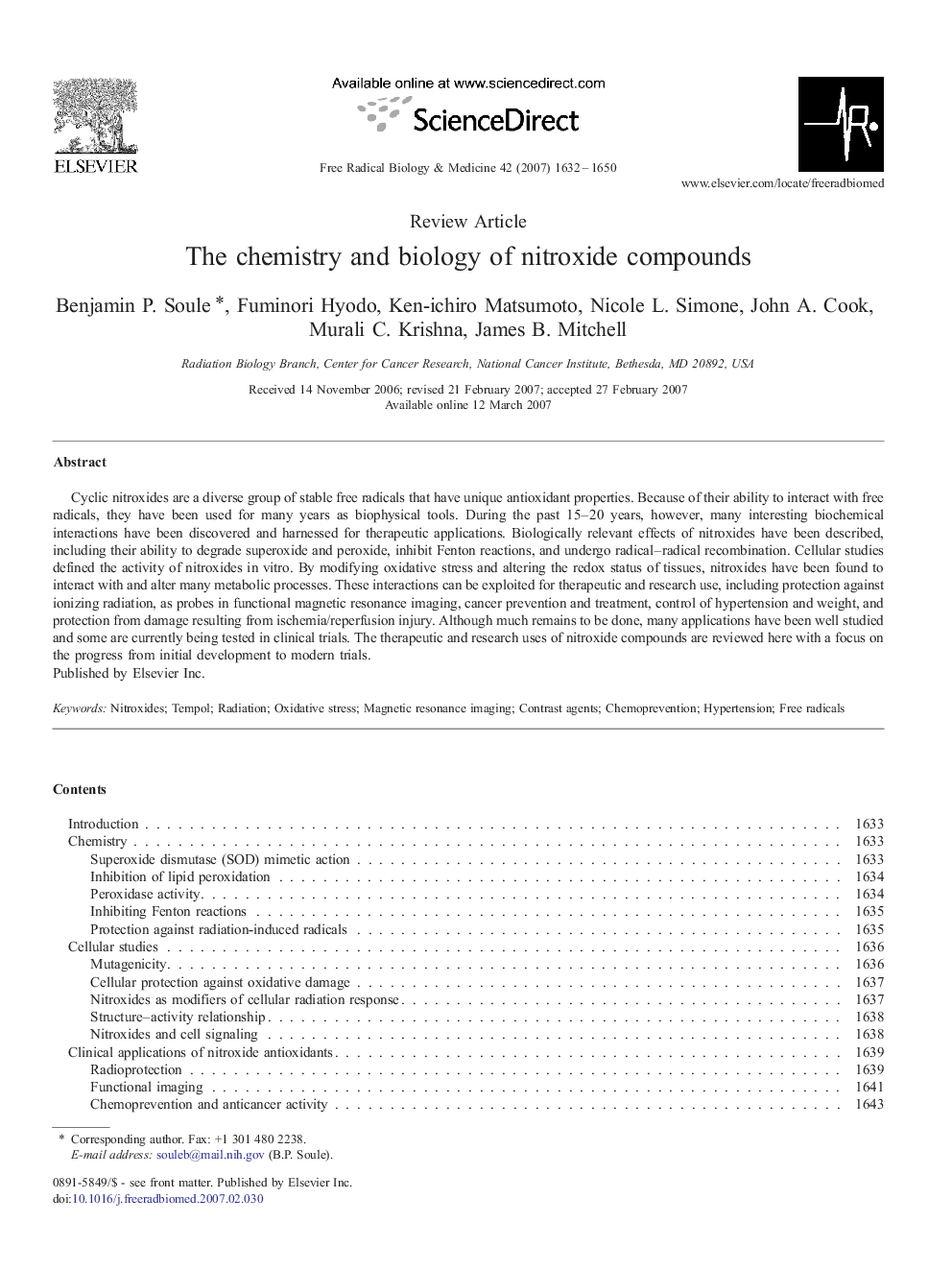| Article ID | Journal | Published Year | Pages | File Type |
|---|---|---|---|---|
| 1911848 | Free Radical Biology and Medicine | 2007 | 19 Pages |
Cyclic nitroxides are a diverse group of stable free radicals that have unique antioxidant properties. Because of their ability to interact with free radicals, they have been used for many years as biophysical tools. During the past 15–20 years, however, many interesting biochemical interactions have been discovered and harnessed for therapeutic applications. Biologically relevant effects of nitroxides have been described, including their ability to degrade superoxide and peroxide, inhibit Fenton reactions, and undergo radical–radical recombination. Cellular studies defined the activity of nitroxides in vitro. By modifying oxidative stress and altering the redox status of tissues, nitroxides have been found to interact with and alter many metabolic processes. These interactions can be exploited for therapeutic and research use, including protection against ionizing radiation, as probes in functional magnetic resonance imaging, cancer prevention and treatment, control of hypertension and weight, and protection from damage resulting from ischemia/reperfusion injury. Although much remains to be done, many applications have been well studied and some are currently being tested in clinical trials. The therapeutic and research uses of nitroxide compounds are reviewed here with a focus on the progress from initial development to modern trials.
